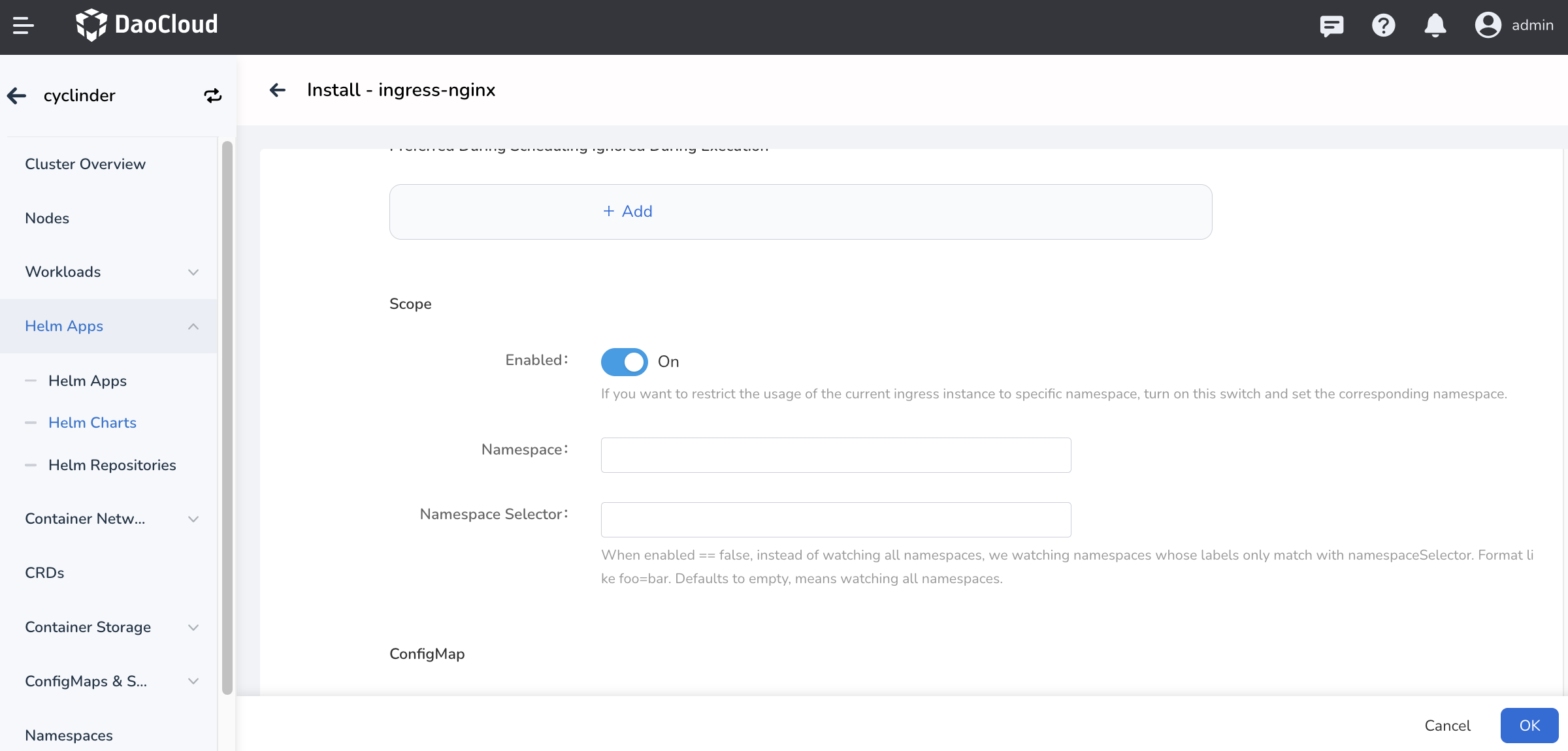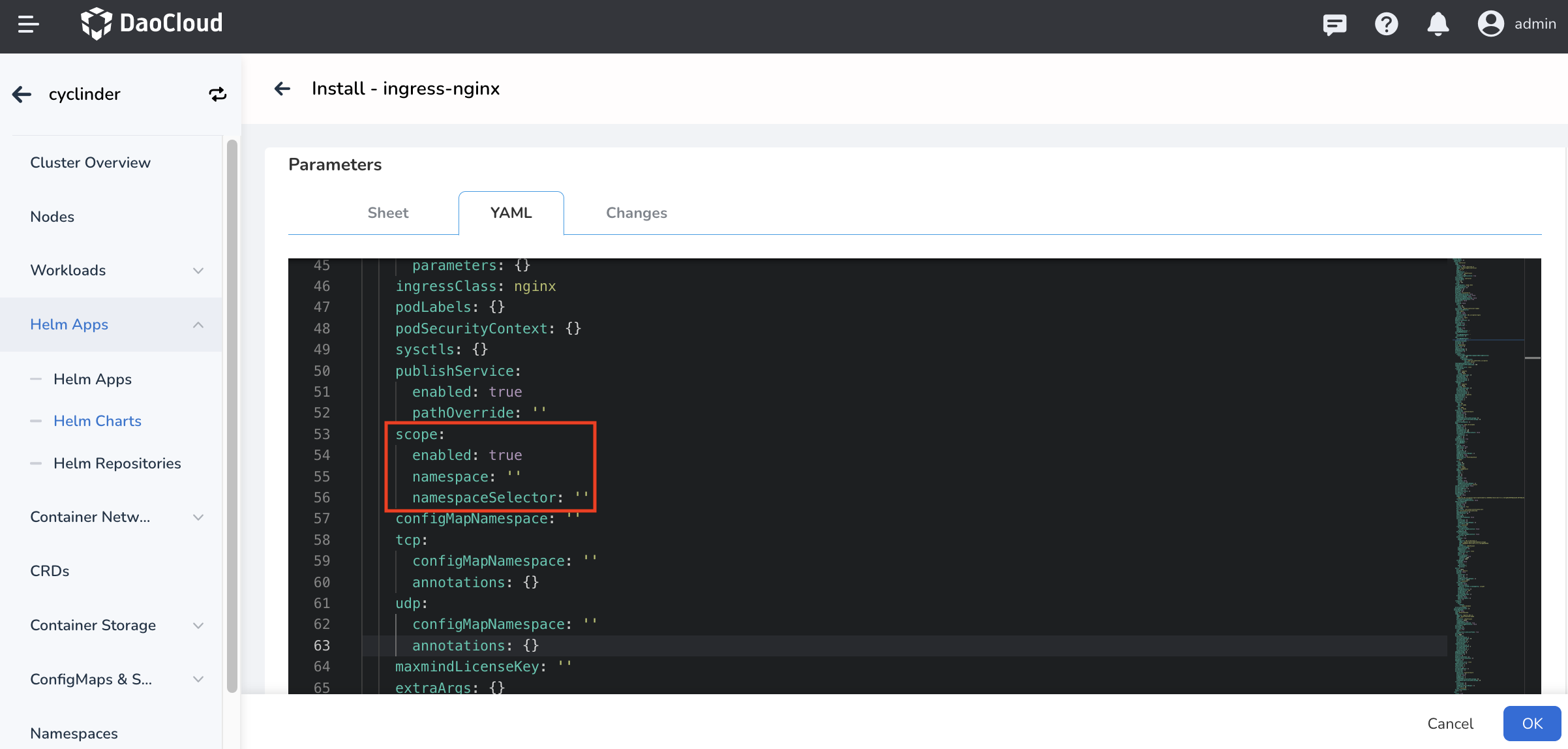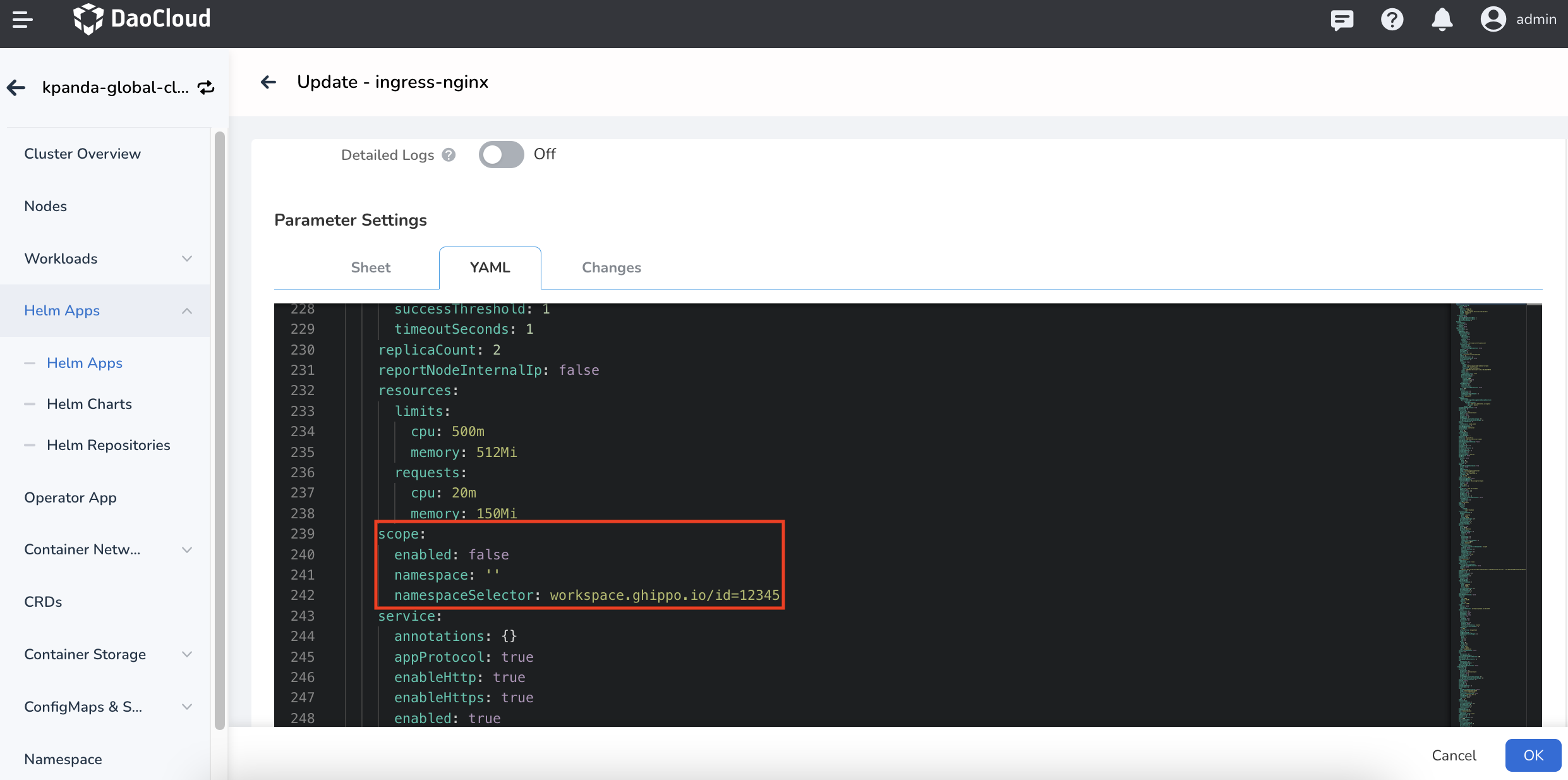Ingress Scope¶
The IngressClass Scope can be used to specify whether the Ingress instance is limited to the cluster level、the namespace level and the workspace level.
Platform-level Load Balancing
- Platform-level Ingress instances can be set up in the same cluster that shares the same Ingress instance.
Namespace-level Load Balancing
Namespace-level load balancing consists of Namespace Ingress instances and Workspace Ingress instances.
- Namespace-level Ingress instances can be set when a namespace use an exclusive Ingress instance for load isolation.
- The workspace has an exclusive Ingress instance for load isolation, which can be set up as a
workspace-level Ingress instance. The workspace corresponds to the namespace under the current cluster where all Pods can receive requests distributed by this load balancer.
If there are different applications in the same namespace in the same cluster that need to use different Ingress instances, please refer to IngressClass.
Platform-level Ingress instances¶
When creating an Ingress instance with Ingress Scope enabled, the IngressClass resource is created with platform-level Ingress instances in the following two cases:
- Only
parametersis set but.spec.parameters.scopeis not set .spec.parameters.scopeis set tocluster
# Example
apiVersion: networking.k8s.io/v1
kind: IngressClass
metadata:
name: external-lb-1
spec:
controller: example.com/ingress-controller
parameters:
scope: Cluster # Specify the scope of the Ingress instance as Cluster
apiGroup: k8s.example.net
kind: ClusterIngressParameter # Specify the Ingress instance Kind as ClusterIngressParameter
name: external-config-1
Namespace-level Ingress instances¶
When creating an Ingress instance, with Ingress Scope enabled, and IngressClass set to .spec.parameters, and .spec.parameters.scope set to Namespace, then the Ingress Class of the Ingress instance is namespace level and the namespace to be used needs to be specified.
Namespace-level Ingress instances are equivalent to the fact that the admin delegates Ingress usage rights to a namespace, allowing for resource isolation. If you set up namespace-level instances, you can select and use them in Namespace-level Load Balancing when you create routes.
#Example
apiVersion: networking.k8s.io/v1
kind: IngressClass
metadata:
name: external-lb-2
spec:
controller: example.com/ingress-controller
parameters:
scope: Namespace # Specify the scope of the Ingress instance as Namespace
apiGroup: k8s.example.com
kind: IngressParameter # Specifies that the Ingress instance Kind is IngressParameter
namespace: default # Specify the namespace to be used
name: external-config
Workspace-level Ingress instances¶
When creating an Ingress instance, if Ingress Scope is enabled, IngressClass is .spec.parameters, and .spec.parameters.scope is namespaceSelector, and the Label is workspace.ghippo.io/id: '12345' (where 12345 is the ID of the specified workspace workspace01), then the Ingress instance's Ingress Class is at workspace-level, which applies to all namespaces in workspace01 that are in the current cluster.
An Ingress instance at the namesapce level is equivalent to an admin delegating rights to use Ingress to a workspace, thus achieving tenant resource isolation.
#Example
apiVersion: networking.k8s.io/v1
kind: IngressClass
metadata.
name: external-lb-2
spec.
controller: example.com/ingress-controller
parameters.
scope: Namespace # Specify the scope of the Ingress instance as Namespace
apiGroup: k8s.example.com
kind: IngressParameter # Specify the Ingress instance Kind as IngressParameter
namespaceSelector: workspace.ghippo.io/id: '1235' # Specify the workspace ID to be used
name: external-config
How to deploy platform/workspace/namespace-level Ingress instances?¶
Different instances can watch different namespaces by specifying --watch-namespace. If ingress-nginx instances are installed via Helm, you need to enable and set platform/workspace/namespace level Ingress by specifying -controller.scope.enabled=true and -set controller.scope.namespace=$NAMESPACE.
Platform-level Ingress Instance: Ifscopeis disabled when creating an Ingress instance, the Ingress instance created isplatform-level.Namespace-level Ingress instances: If you create Ingress instances withscopedisabled and specify the corresponding namespace innamespace, the Ingress created isnamespace-level.
The following example creates Ingress-nginx as a Default exclusive:

Configuration information in the corresponding value.yaml:

Workspace-level Ingress Instance: When deploying Ingress-Ngnix, set thescopetodisabledand specifyworkspace.ghippo.io/id=12345in theNamespace Selectorto create an Ingress Instance with anID12345exclusive to the workspace. The corresponding configuration information in
The corresponding configuration information in value.yaml:
After the Ingress instance is deployed, you can create Ingress rules in the corresponding namespace and select the Ingress Class for the corresponding instance to use.
For more information you can refer to scope.